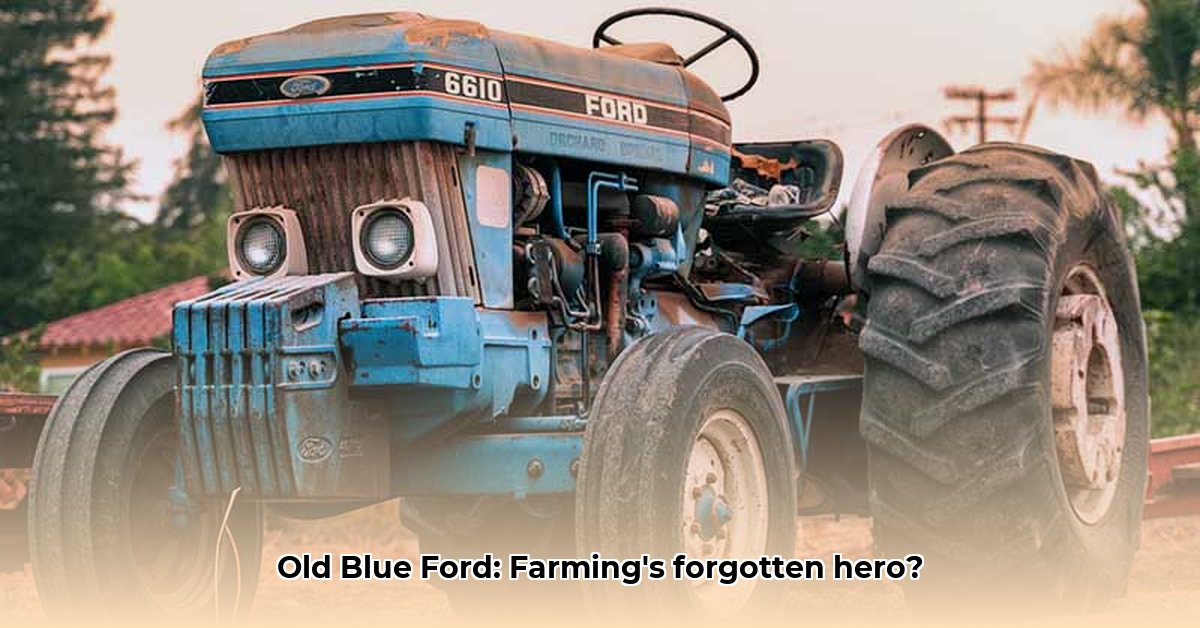
The rumble of a Ford Blue tractor—that deep, dependable chug—echoes through generations of American farms. It's a sound synonymous with hard work, ingenuity, and a piece of agricultural history painted a distinctive Ford blue. This isn't just about a machine; it's about the transformation of farming itself. Let's delve into the story of the iconic old blue Ford tractor, from its humble beginnings to its enduring legacy. For a detailed look at a specific model, check out this 1954 Ford NAA Tractor resource.
The Dawn of the Blue Tractor: A Farmer's Best Friend
Before Henry Ford revolutionized car manufacturing, he set his sights on another industry: agriculture. Before the early 20th century, tractors were expensive and inaccessible to the average farmer. Many relied on horses and manpower—a slow and laborious process. Then came the Fordson, a simpler, more affordable tractor, dramatically changing the agricultural landscape. Mechanization was suddenly within reach for countless small family farms. This wasn't simply selling a machine; it was empowering a community. Wasn't this a pivotal moment, democratizing access to advanced farming technology?
Ford understood the power of branding. Choosing a vibrant, unforgettable blue for their tractors created an instant visual connection. That distinct shade of blue became synonymous with dependability, hard work, and the American farmer. It's a color that still evokes strong feelings of nostalgia and respect. Consider the pride a farmer felt, driving his own blue tractor across his fields.
Technological Advancements: More Than Just a Pretty Color
The old blue Ford wasn't a static design; it continually evolved. The 2N model (introduced during World War II), with its hand-crank starter, reflected the need for resourcefulness and practicality. Post-war, the 8N offered greater efficiency. By the 1960s, the 1000 series boasted powerful four-cylinder engines, representing considerable leaps in engineering. These advancements weren't just about increased horsepower; they significantly improved fuel efficiency and overall productivity. This reduced labor costs and led to more sustainable farming practices. The impact on agriculture was profound.
How did these technological leaps impact the farmer's daily life and long-term profitability? The 2N model's hand-crank starter, for instance, highlights the resourcefulness needed during wartime.
| Model | Era | Key Features | Impact on Farming |
|---|---|---|---|
| Fordson | Early 1900s | Affordability, simplicity, accessible mechanization | Revolutionized small-scale farming |
| 2N | WWII Era | Durability, resourcefulness (hand-crank starter) | Showcased adaptability during wartime constraints |
| 8N | Post-WWII | Improved efficiency, increased productivity | Enhanced farm output, lower operating costs |
| 1000 Series | 1960s onward | Powerful engine, advanced technology | Significant increase in capacity and efficiency |
A New Chapter: The New Holland Legacy
The Ford tractor story didn't end with Ford itself. In 1986, Ford acquired New Holland, creating a powerhouse in the farming industry. However, Fiat purchased the combined entity in 1991. The Ford brand was absorbed into New Holland, initiating a new era. Despite the change in ownership, the spirit of the old blue Ford tractor persevered. While the precise shade of blue might have subtly shifted, the iconic color and the legacy of dependability it represented remained central to New Holland's brand identity. This shows the enduring power of a well-established brand.
An Enduring Legacy: Shaping Sustainable Agriculture
The old blue Ford tractor represents more than just a machine; it's a symbol of progress in agriculture. Its evolution reflects a constant drive towards greater efficiency and sustainability. From its initial affordability broadening access to mechanization to advancements in fuel efficiency, the impact on farming practices is undeniable. The New Holland transition further proves that adaptation and innovation can lead to long-term success. The emphasis on efficiency and sustainable farming practices, so crucial today, has its roots in the continuous improvement seen throughout the Ford tractor's development.
Actionable Takeaways: Lessons from the Blue
This story offers valuable insights for various stakeholders:
Collectors: Meticulous preservation of original Ford blue paint schemes is key to maintaining historical significance. Accurate color matching requires diligent research.
New Holland (CNH): Market research into consumer preferences regarding the iconic blue is crucial. Exploring a new line of tractors featuring a classic blue hue could resonate strongly with customers. Investment in sustainable manufacturing processes is paramount.
Farmers: Providing feedback to manufacturers about their needs will drive future design improvements.
Researchers: Further studies on the influence of paint color on brand recognition and the effect of farm equipment on sustainability are vital.
The story of the old blue Ford tractor is not just a historical account; it’s a living testament to the intersection of innovation, adaptation, and the enduring human pursuit of progress in agriculture. The legacy continues, shaping the future of farming.